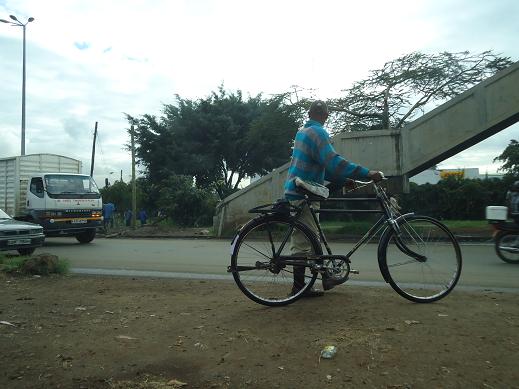Road traffic injuries are a major public health problem and a leading cause of death and injury around the world. Each year over 1.2 million people die and millions more are injured or disabled as a result of road crashes, mostly in low-income and middle-income countries. As well as creating enormous social costs for individuals, families and communities, road traffic injuries place a heavy burden on health services and economies. The global cost to governments due to road traffic injuries is around 3% of a countrys gross domestic product (GDP), more than the total amount that many countries recieve in development assistance per year TEST JR.
As motorization increases, road traffic crashes are a fast-growing problem, particularly in developing countries. If present trends continue unchecked, road traffic injuries will increase dramatically in most parts of the world over the next two decades with the greatest impact falling on the most vulnerable citizens. Appropriate and targeted action is urgently needed.
Africa is the region with the worst death rate from road crashes, with a fatality rate of 26.6 deaths per 100 000 population. In Asia the problem is equally serious. Most of those affected by road traffic crashes are people who cannot afford a car - pedestrians, cyclists and users of public transportation. Road crashes also place a heavy burden on a continents younger members: road crashes are the second leading cause of death for the 5 to 44 age group in African countries, and those aged 15-44 account for half of road traffic deaths globally.
The World Report on Road Traffic Injury Prevention, launched jointly in 2004 by the World Health Organization (WHO) and the World Bank, identified improvements in road safety management that have dramatically decreased road traffic deaths and injuries in industrialized countries that have been active in road safety. The report showed that the use of seat-belts, helmets and child restraints has saved thousands of lives. The introduction and enforcement of appropriate speed limits, the creation of safer infrastructure, the enforcement of blood alcohol concentration limits and improvements in vehicle safety, are all interventions that have been tested and repeatedly shown to be effective. The World Report was the first ever comprehensive global overview of the magnitude, risk factors, and impact of road traffic injuries. The World Report recommends practical actions to mitigate these factors and an integrated "systems approach" to road safety improvements, using a lead agency to coordinate the development of national road safety strategies and plans.
Following the report, now published regularly by the WHO, a number of good practice manuals have been launched for practical implementation of programmes aiming at minimizing the key risk factors.The latest report, Global Status Report on Road Safety 2015, can be accessed here.
In November 2009 in Moscow, a meeting of more than seventy ministers and heads of delegations, representatives of international organizations, and nongovernmental organizations marked an historical turning point for road safety.The ministers recognised that the solution to the global road safety crisis can only be implemented through multi-sectoral collaboration and partnerships among all concerned in both public and private sectors, with the involvement of civil society. The Ministers agreed that they were "determined to build on existing successes and learn from past experiences." The key outcome of the conference was the approval of the Moscow Declaration, which called for a Decade of Action for Road Safety.
To learn more about the Global Plan for the Decade of Action for Road Safety, please see the dedicated section "Global Plan for the Decade of Action for Road Safety" that hosts also the United Nations Road Safety Collaboration Group Work and the related WHO page.
The adoption of the 2030 Agenda for Sustainable Development has given new impetus to the international efforts aiming at addressing the road safety pandemics. Aimed at halving road traffic deaths and injuries by 2020 and providing access to safe, affordable, accessible and sustainable transport systems for all by 2030, Sustainable Development Goal (SDG) targets 3.6 and 11.2 represent the strongest commitment ever made by the United Nations to road injury prevention.
Five years after the launch of the Decade and following the adoption of the SDGs, the 2015 Brasilia Declaration was a call to rethink transport policies in order to favour more sustainable modes of transport such as walking, cycling and using public transport. It highlighted strategies to ensure the safety of all road users, improve laws and enforcement, make roads safer through infrastructural modifications, ensure that vehicles are equipped with life-saving technologies, and enhance emergency trauma care systems. The Brasilia Declaration encourages the WHO and partners to facilitate the development of targets to reduce road traffic crashes and fatalities, and to support the definition and use of indicators linked to the SDG targets related to road safety.
The Brasilia declaration has been endorsed by the latest United Nations General Assembly Resolutions on Road Safety. You can access the Resolutions here.
In May 2017, the WHO has released the Save LIVES technical package. The document provides an evidence-based inventory of priority interventions to be implemented towards achieving the SDG targets.


